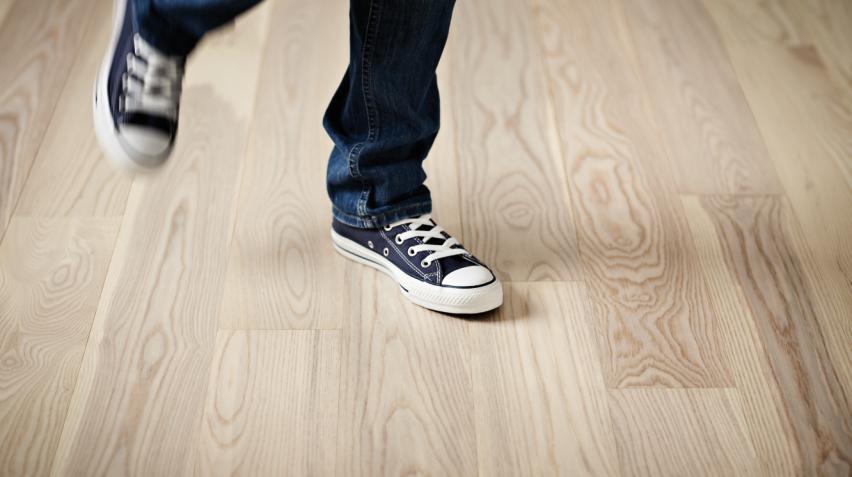Do You Need Underlayment for Glue Down Hardwood Floors? A Complete Guide
Choosing the right foundation for your hardwood floor is an important step in any home renovation or new build. When it comes to glue down hardwood floors, many homeowners wonder if underlayment is necessary—or if it’s better to install the floor directly on the subfloor. In this guide, we break down when underlayment is needed for glue down hardwood floors, the role of moisture barriers, sound insulation, and key considerations for a hassle-free installation. You'll find clear answers, practical advice, and tips to help you make confident decisions for a healthy, long-lasting floor in your home.
What Is Underlayment and Why Does It Matter for Glue Down Hardwood Floors?
Underlayment is a thin layer of material installed between the subfloor and your finished wood flooring. Its main purposes are to provide moisture protection, improve insulation, and, in some cases, enhance sound dampening. When planning a flooring project in your home—whether it’s a new build or a renovation—it’s natural to wonder about the need for underlayment for glue down hardwood floors. The answer is not always straightforward. While underlayment plays a critical role in some types of flooring installations, its necessity for glue down hardwood floors depends on several factors, including subfloor type, location, and specific requirements for comfort or building codes.
Standard Installation Practices for Glue Down Hardwood Floors in Private Homes
In most private homes, glue down hardwood floors are installed directly onto a prepared subfloor, such as concrete or plywood, using a high-quality adhesive. For solid hardwood floors from Junckers, this method ensures a secure and durable bond, allowing the natural characteristics of wood to shine through and perform optimally for years. Generally, underlayment for glue down hardwood floors is not part of the standard installation process. The adhesive itself can serve as a moisture barrier and provides the necessary connection between the wood and subfloor. This approach supports a low-profile floor build, allowing for seamless transitions to other surfaces and ensuring compatibility with underfloor heating systems—an important consideration for comfort and energy efficiency in your home.
You can find more technical information about adhesives and additional materials suitable for glue down installations in the materials for glued floors product data sheet.
When Is Underlayment Recommended for Glue Down Hardwood Floors?
While most residential projects do not require underlayment for glue down hardwood floors, there are specific scenarios where it may be beneficial or required:
- Moisture protection over concrete subfloors: In basements or areas with potential moisture, a dedicated moisture barrier or specific adhesive with moisture-resistant properties may be necessary to prevent damage to your hardwood floor.
- Sound insulation requirements: In apartments or multi-story homes, underlayment such as cork or rubber may be used to reduce sound transmission between floors and provide additional comfort.
- Building code compliance: Some local regulations or building codes may specify underlayment for certain installations, particularly in multi-family residential settings—even if it’s not standard for single-unit homes.
- Subfloor irregularities: If your subfloor is uneven or has minor imperfections, a suitable underlayment can help create a smoother surface for installation.
Always consult your flooring supplier or installer to confirm the best solution for your specific project.
Choosing the Right Moisture Barrier for Your Home
Moisture protection is crucial, especially when installing glue down hardwood floors over concrete. Instead of a traditional underlayment, a moisture barrier is often applied directly to the subfloor before installation. This can be in the form of a liquid-applied membrane or a specially formulated adhesive with built-in moisture-blocking capabilities. For Junckers solid wood floors, always follow our recommendations for compatible moisture barriers to ensure the longevity and performance of your new floor. If you are uncertain about subfloor moisture levels, professional testing is recommended before installation.
Sound Insulation and Comfort Considerations
In certain living situations, such as apartments or homes with multiple levels, sound insulation becomes a priority. A specialized acoustical underlayment—like cork or rubber—can be glued down before the hardwood floor is installed, helping to dampen noise and increase underfoot comfort. Although this is not a typical requirement for single-unit homes, it may be specified if you desire quieter rooms or if building codes require it. Always verify that any underlayment used is compatible with glue down hardwood floors and approved by the floor manufacturer. For detailed technical documentation covering both heating and sound-related aspects of your hardwood flooring, consult the E - Underfloor Heating & sound product data sheet.
Key Factors to Consider Before Installing Glue Down Hardwood Floors
Before starting your installation, consider these important factors:
- Subfloor type: Is it concrete, plywood, or another material? This impacts both the adhesive and underlayment options.
- Moisture levels: Test for moisture and use a suitable barrier where necessary.
- Underfloor heating: Junckers floors are compatible, but always check specific installation instructions. For additional guidance, see Junckers’ overview of under floor heating.
- Sound insulation needs: Assess if extra comfort or noise reduction is desired.
- Manufacturer’s guidelines: Always follow Junckers’ advice for product compatibility and warranty protection.
- Local building codes: Ensure compliance with any regulations for residential installations.
Careful planning at this stage helps avoid issues later and ensures your floor performs beautifully for years to come.
How Junckers Supports Your Home Flooring Project
Junckers offers an extensive selection of solid wood flooring options, designed to meet the needs of private homeowners seeking both beauty and long-lasting quality. Our range includes classic plank and 2-strip floors, as well as stylish choices like herringbone parquet and HexParket. Each floor is factory-finished for easy installation and minimal maintenance. Sourced from responsibly managed forests and many with indoor climate labeling, Junckers floors contribute to a healthy home environment and sustainable living. Whether you’re renovating or building new, our experts are ready to assist with advice on installation methods—including the right approach to underlayment for glue down hardwood floors—and product selection for your unique space. To see the variety of styles and finishes available for your home, explore the choose your personal expression guide.
Next Steps and Expert Advice for Your Flooring Project
Making the right decision about underlayment for glue down hardwood floors will help ensure lasting results and peace of mind. If you have any questions about your specific installation, or want tailored recommendations for your home, our team at Junckers is here to help. For inspiration and practical installation guidance, consult the Twin Herringbone Parquet laying instructions and HexParket laying instructions if you are considering these decorative flooring options for your home.
Frequently Asked Questions About Underlayment for Glue Down Hardwood Floors
Can I use underlayment with solid wood floors? add
Underlayment is generally not required for glue down installations of solid wood floors in private homes, unless for moisture or sound insulation needs.
What if I have underfloor heating? add
Junckers solid wood floors are compatible with underfloor heating. Always choose installation methods and materials that allow heat transfer and meet our technical guidelines. Learn more about optimal setups in Junckers’ under floor heating overview.
How do I know if my subfloor needs extra protection? add
A moisture test or assessment by a professional can determine if a barrier or underlayment is needed, especially for concrete subfloors or areas prone to damp.
Will underlayment make my floor quieter? add
Acoustic underlayment can help reduce noise, though it’s not standard in single-unit homes. It’s more commonly used in multi-story buildings or where additional comfort is desired.
More technical information on adhesives and installation materials can be found in the materials for glued floors product data sheet.



